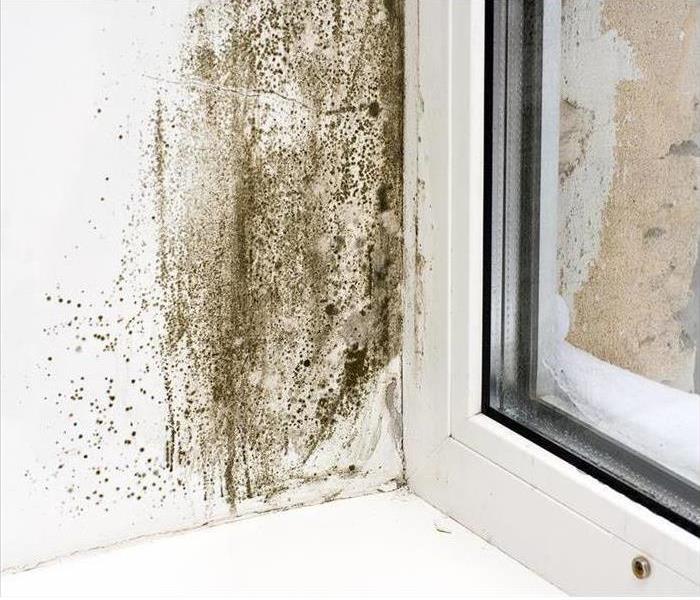5 Frequently Asked Questions About Mold
8/4/2023 (Permalink)
Most people have encountered mold growth at some point. However, many have questions about this common unwanted fungus. These frequently asked questions will help you better understand mold and what you can do about it.
Frequently Asked Questions About Mold
- What Is Mold?
Mold is a variety of fungus. Mold reproduces through spores that travel easily through the air and land on indoor and outdoor surfaces. Because mold needs moisture to grow, it is more prevalent in areas with high humidity. This is why mold is often found in damp areas, such as shower rooms, refrigerators, laundry facilities and property with water damage from leaks or flooding. There are thousands of species of mold and some have beneficial properties; however, mold can also cause property damage because it feeds on the materials it grows on.
- How Can You Tell If You Have a Mold Problem?
Mold naturally occurs in the environment and is always present in most buildings. However, excessive mold growth can lead to problems. One of the first signs of mold is often musty odors. If you are noticing musty smells, it is a good idea to inspect areas that are prone to mold, such as bathrooms, basements, sink areas and windows. Mold often appears as black, brown, gray, green or pink stains that may have a fuzzy appearance.
- What Causes Mold To Grow?
Mold needs oxygen, food and water to grow. Mold grows best in temperatures between 77 and 86 degrees Fahrenheit and can not grow at temperatures below 40 degrees Fahrenheit. It also thrives in wet conditions, such as buildings that have water damage. It can consume almost any organic matter, which makes it difficult to fight mold by removing food sources since even very clean buildings usually have some organic matter on surfaces.
- Where Can Mold Grow?
Mold can grow on any material that provides it with a food source. Organic materials, such as paper, wood and dust provide optimal food sources for mold; however, it can also grow on some synthetic materials, such as adhesives, textiles and paint. Mold can not feed on inorganic materials, such as metal, concrete or glass, but it can digest the dust, dirt and other organic residues that may accumulate on these surfaces. Replacing materials made from wood and paper, such as drywall or wallpaper, with mold-resistant alternatives can reduce the chance of mold problems in your property.
- How Does Mold Damage Surfaces?
Mold eats the materials it grows on, which can cause the material to rot or decay. Mold that is not promptly removed can cause undesirable smells, stains and other cosmetic damage and structural damage. The longer mold is allowed to grow, the more it breaks down materials and spreads to new surfaces, so it is important to contact a mold remediation company in Sandy, UT, as soon as mold is discovered.
Even though mold is a natural part of the environment, excessive mold growth can cause serious property damage. Reducing sources of food and moisture and promptly removing mold when discovered is the key to limiting mold damage.




 24/7 Emergency Service
24/7 Emergency Service
